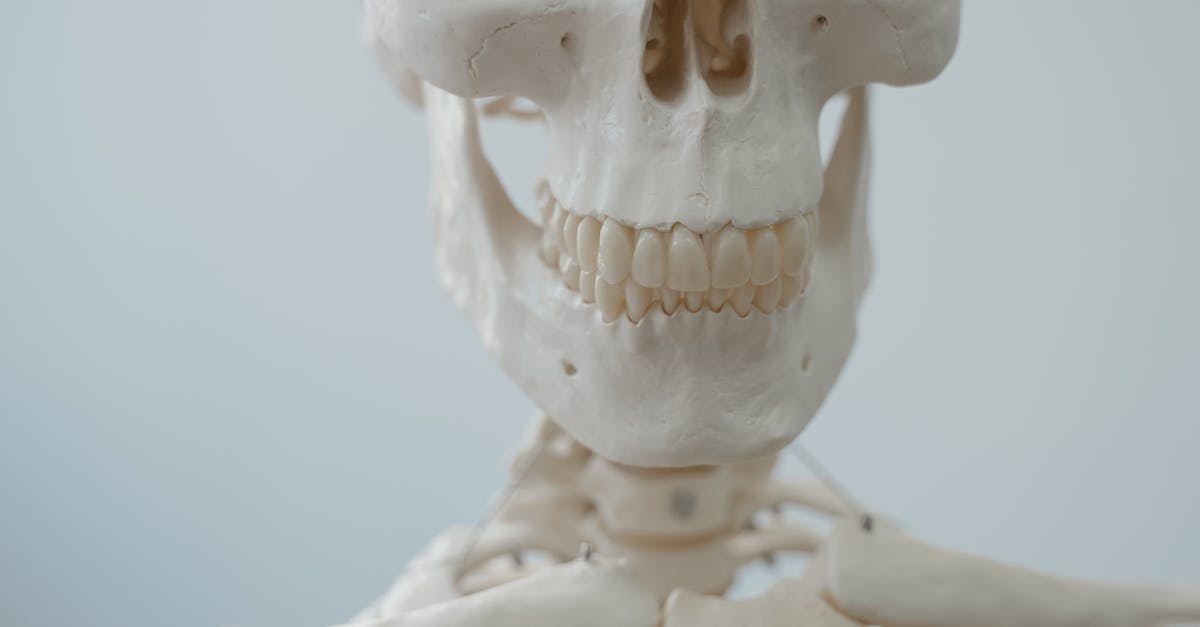Right Hip Flexor Strain: Causes, Treatment, and Prevention
Addressing the Causes, Exploring Treatment Options, and Unlocking Prevention Strategies for Right Hip Flexor Strains

The Right Hip Flexor Strain: A Guide to Causes, Treatment, and Prevention
Hip flexor strains are a common injury among athletes and individuals involved in various physical activities. Understanding the causes, symptoms, and proper management of this condition is crucial for optimal recovery and prevention of future episodes.
This comprehensive guide will delve into the intricacies of right hip flexor strains, providing valuable insights into their causes, effective treatment approaches, and preventive measures to safeguard your hip health.
1. What is a Right Hip Flexor Strain?
What is a Right Hip Flexor Strain?
A muscle or tendon tear is referred to as a strain. The muscles that enable you to raise your thigh toward your body are known as hip flexors. A tear in one of these muscles or tendons is known as a right hip flexor strain.
Hip flexor strains are frequently brought on by quick twisting motions or overexertion that put excessive strain on the hip flexor muscles. Intense exercise, falls, and sports injuries are typical causes of this condition.
Knowing the causes, symptoms, and proper treatment of this condition is essential for recovery. This comprehensive guide will provide in-depth information on right hip flexor strains and empower you with knowledge for optimal management.
Causes of a Right Hip Flexor Strain
Causes of a Right Hip Flexor Strain
Hip flexor strains commonly arise from overexertion or abrupt twisting movements that exert excessive force on the hip flexor muscles. Strenuous activities, such as intensive exercise, falls, and sports injuries, can contribute to the development of this condition.
Understanding the causes of a right hip flexor strain is crucial for prevention. Here are some common scenarios that can lead to this injury:
- Overexertion: Activities that require repetitive or forceful use of the hip flexors, such as running, jumping, or cycling, can strain these muscles if proper warm-up and stretching are not performed.
- Sudden twisting movements: Sports like soccer, basketball, or martial arts often involve quick changes in direction and sudden twisting motions. These movements can put excessive stress on the hip flexors, potentially causing a strain.
- Falls: A sudden fall or landing awkwardly can impact the hip joint and result in a hip flexor strain.
Being aware of these causes can help you take preventive measures to minimize the risk of developing a right hip flexor strain.
Symptoms of a Right Hip Flexor Strain
Symptoms of a Right Hip Flexor Strain
Hip flexor strains manifest with varying degrees of pain in the front of the hip. This pain is often exacerbated when lifting the leg against resistance or during activities like running and kicking. Other symptoms may include:
- Bruising: Discoloration of the skin around the affected area may occur due to bleeding beneath the skin’s surface.
- Tenderness: The area around the injured hip flexor muscle(s) may be tender to the touch.
- Swelling: Inflammation caused by the strain can lead to swelling in the hip area.
- Limited range of motion: The pain and discomfort associated with the strain may restrict the range of motion in the hip joint.
Recognizing these symptoms and seeking timely medical attention is important for proper diagnosis and treatment of a right hip flexor strain.
2. Treatment for a Right Hip Flexor Strain

Treatment for a Right Hip Flexor Strain
Treatment for a right hip flexor strain typically involves a combination of conservative measures to manage pain and swelling, and in some cases, physical therapy to restore range of motion.
Conservative Treatment:
- Rest: Avoiding activities that aggravate the pain is essential for healing. Resting the injured hip flexor muscles allows them to recover and repair.
- Ice: Applying ice packs to the affected area can help reduce pain and inflammation.
- Compression: Using an elastic bandage to wrap the hip can provide support and reduce swelling.
- Elevation: Keeping the injured hip elevated above the level of the heart can help reduce swelling and promote blood flow to the area.
Physical Therapy:
In more severe cases, physical therapy may be recommended to restore range of motion and strengthen the hip flexor muscles. A physical therapist can guide you through specific exercises and stretches to improve flexibility and mobility in the hip joint.
Conservative Treatment Options
Conservative Treatment Options
Initial treatment for a right hip flexor strain often involves conservative measures that can be implemented at home. These include:
- Rest: Avoiding activities that aggravate the pain is crucial for healing. Resting the injured hip flexor muscles allows them to recover and repair.
- Ice: Applying ice packs to the affected area can help reduce pain and inflammation.
- Over-the-counter pain relievers: Nonsteroidal anti-inflammatory drugs (NSAIDs) such as ibuprofen or naproxen can help relieve pain and inflammation.
- Activity modification: Modifying activities to reduce strain on the hip flexor muscles is important. This may involve avoiding certain exercises or movements that trigger pain.
- Stretching exercises: Gentle stretching exercises can help improve flexibility and range of motion in the hip joint. Stretches that target the hip flexor muscles can promote healing and prevent stiffness.
Conservative treatment options can effectively manage the symptoms of a right hip flexor strain and facilitate healing. However, if pain and discomfort persist or worsen, it is advisable to seek medical attention for further evaluation and guidance.
Medical Treatment Options
Medical Treatment Options
In cases where conservative measures fail to provide adequate pain relief or improve symptoms, stronger medical interventions may be necessary.
- Prescription pain relievers: Stronger pain relievers, such as opioids or muscle relaxants, may be prescribed to manage severe pain.
- Injections: In some cases, corticosteroid injections may be administered to reduce inflammation and pain around the hip flexor muscles.
- Surgery: In rare and severe cases, surgery may be recommended to repair a torn hip flexor muscle. This is typically considered when conservative treatment options have not been successful and the tear is causing significant pain and disability.
Medical treatment options should be carefully considered and discussed with a healthcare professional to determine the most appropriate course of action based on the severity of the injury and individual circumstances.
3. Prevention of Right Hip Flexor Strains
Prevention of Right Hip Flexor Strains
Preventing right hip flexor strains involves adopting proactive measures to reduce the risk of injury. Here are some key preventive strategies:
- Proper warm-up before exercise: Warming up the hip flexor muscles before engaging in physical activities is crucial. Dynamic stretches, such as leg swings and lunges, help prepare the muscles for movement and reduce the likelihood of strains.
- Maintaining balanced strength and flexibility: Strengthening the hip flexors through exercises like squats and hip extensions is essential. Additionally, improving flexibility in the hip flexors and surrounding muscles through regular stretching can help prevent imbalances and reduce the risk of injury.
- Using proper techniques when lifting objects or performing physical activities: Employing proper lifting techniques and maintaining good posture during everyday activities can help prevent undue strain on the hip flexor muscles. Avoiding sudden or jerky movements, lifting heavy objects with the legs而非 the back, and maintaining a neutral spine are all important preventive measures.
Warm-up and Stretching
Warm-up and Stretching
Warming up the hip flexor muscles before engaging in physical activities is crucial for injury prevention. Dynamic stretches, which involve moving the muscles through their full range of motion, are particularly effective in preparing the hip flexors for activity and reducing the risk of strains.
Some examples of dynamic stretches that target the hip flexors include:
- Leg swings: Stand with your feet shoulder-width apart and swing one leg forward and back, keeping your knee slightly bent. Repeat with the other leg.
- Lunges: Step forward with one leg and lower your body until your back knee is close to the ground. Keep your front knee aligned with your ankle and your torso upright. Push back to the starting position and repeat with the other leg.
Incorporating these dynamic stretches into your warm-up routine can help improve flexibility and range of motion in the hip flexors, reducing the likelihood of strains during exercise or other physical activities.
Strengthening Exercises
Strengthening Exercises
Strengthening the hip flexors and surrounding muscles is essential for preventing strains and maintaining overall hip stability. Incorporating exercises that target these muscles into your fitness routine can help improve strength, balance, and coordination.
Some effective strengthening exercises for the hip flexors include:
- Squats: Stand with your feet shoulder-width apart and lower your body by bending your knees and hips, as if sitting back into a chair. Keep your back straight and your knees aligned with your toes. Return to the starting position by extending your knees and hips.
- Leg presses: Sit in a leg press machine with your feet flat on the platform. Push the platform away from you by extending your knees and hips, keeping your back firmly against the seat. Slowly lower the weight back down to the starting position.
- Hip extensions: Lie on your back with your knees bent and your feet flat on the floor. Lift your hips towards the ceiling, squeezing your glutes at the top of the movement. Slowly lower back down to the starting position.
Regularly performing these strengthening exercises can help enhance the strength and resilience of the hip flexors, reducing the risk of strains and promoting overall hip health.
4. When to Consult a Medical Professional

When to Consult a Medical Professional
Seeking prompt medical attention is crucial if you experience severe pain, swelling, or limited mobility in your hip. These symptoms may indicate a more serious underlying condition that requires professional diagnosis and treatment.
Here are some instances when you should consider consulting a medical professional:
- Severe pain: If you experience intense pain in your hip that persists or worsens over time, it’s important to seek medical evaluation. Severe pain can be a sign of a more serious injury, such as a tear or fracture.
- Swelling: Significant swelling in the hip area can indicate inflammation or fluid buildup. This may be caused by an injury or an underlying medical condition that requires attention.
- Limited mobility: If you have difficulty moving your hip or experience a decreased range of motion, it’s essential to consult a medical professional. Limited mobility can be caused by a variety of factors, including injuries, joint problems, or nerve damage.
Early diagnosis and intervention can optimize recovery, prevent complications, and help you regain full function of your hip. Therefore, if you experience any of the symptoms mentioned above, don’t hesitate to seek professional medical advice.
Red Flags for Medical Consultation
Red Flags for Medical Consultation
Certain symptoms associated with hip pain warrant immediate medical evaluation, as they may indicate a more serious underlying condition. These red flags include:
- Persistent or worsening pain: If your hip pain persists or worsens over time, despite rest and home remedies, it’s crucial to seek medical attention. Persistent pain can be a sign of a more severe injury or an underlying medical condition.
- Inability to walk or bear weight: If you’re unable to walk or bear weight on your affected hip, it’s essential to consult a medical professional immediately. This symptom may indicate a serious injury, such as a fracture or dislocation.
- Associated symptoms like fever or numbness: If your hip pain is accompanied by a fever, chills, or numbness, it’s important to seek medical attention promptly. These symptoms may indicate an infection or a more serious underlying condition that requires immediate treatment.
Recognizing and responding to these red flags can help ensure timely diagnosis and appropriate medical intervention, improving your chances of a successful recovery and preventing complications.
Diagnosis and Imaging Tests
Diagnosis and Imaging Tests
Accurate diagnosis of a hip flexor strain typically involves a combination of physical examination, medical history review, and imaging tests. Here’s how these diagnostic methods contribute to the assessment process:
- Physical examination: During a physical examination, your doctor will assess your range of motion, tenderness, and pain levels. They will physically manipulate your hip to evaluate for any instability, weakness, or other abnormalities.
- Medical history: Your doctor will inquire about your symptoms, including when they started, what activities aggravate them, and if you’ve experienced any previous hip injuries. Sharing your medical history helps the doctor understand the potential causes of your hip pain.
- Imaging tests: Imaging tests, such as X-rays or MRI scans, may be recommended to confirm the diagnosis and determine the severity of the strain. X-rays can reveal fractures or other bone abnormalities, while MRI scans provide detailed images of muscles, tendons, and ligaments, allowing for precise assessment of the extent of the injury.
Combining these diagnostic methods helps your doctor accurately identify the underlying cause of your hip pain and develop an appropriate treatment plan to facilitate your recovery.
5. Additional Tips for Recovery
Additional Tips for Recovery
While recovering from a right hip flexor strain, incorporating these additional tips into your routine can support the healing process and help prevent recurrence:
- Gradual Return to Activity: Avoid rushing back into strenuous activities too soon. Gradually increase your activity level as tolerated to allow your hip flexor muscles to heal and regain strength.
- Maintaining a Healthy Weight: Excess weight puts extra stress on the hip flexors, potentially hindering recovery and increasing the risk of re-injury. Maintaining a healthy weight can reduce strain on the affected muscles.
- Proper Stretching and Strengthening: Regularly perform stretching and strengthening exercises specifically designed for the hip flexors. This helps improve flexibility and range of motion, while also strengthening the muscles to prevent future strains.
- Use of Heat or Ice: Applying heat or ice to the affected area can help reduce pain and inflammation. Heat can promote relaxation and blood flow, while ice can numb the pain and decrease swelling.
- Proper Footwear: Wearing supportive and well-cushioned shoes can provide stability and reduce stress on the hip flexors during daily activities.
Following these tips alongside your prescribed treatment plan can optimize your recovery and minimize the chances of re-injuring your right hip flexor.
Gradual Return to Activity
Gradual Return to Activity
After sustaining a right hip flexor strain, it’s crucial to adopt a gradual approach when returning to physical activities. Rushing back into strenuous activities too soon can hinder the healing process and increase the risk of re-injury. Here’s why a gradual return to activity is essential:
- Allows for Healing: The healing process takes time, and it’s important to give your hip flexor muscles sufficient time to repair and regain strength. Gradually increasing your activity level allows the muscles to adapt and rebuild without overwhelming them.
- Prevents Re-Injury: By gradually returning to activities, you can monitor your body’s response and avoid putting excessive strain on the injured hip flexor. This helps prevent re-injury and allows for a more sustainable recovery.
- Maintains Fitness: Engaging in low-impact exercises during recovery helps maintain your overall fitness levels without putting undue stress on the injured area. Activities like walking or swimming allow you to stay active while supporting the healing process.
Start with low-impact exercises like walking or swimming, and gradually increase the intensity and duration of your activities as tolerated. Listen to your body and rest if you experience any pain or discomfort. By following a gradual return to activity plan, you can safely and effectively regain your fitness while minimizing the risk of re-injury.
Maintaining a Healthy Weight
Maintaining a Healthy Weight
Maintaining a healthy weight is not only beneficial for your overall health but also plays a crucial role in preventing future hip flexor strains. Excess weight puts extra stress on the hip flexor muscles, making them more susceptible to injury. Here’s why maintaining a healthy weight is important for hip flexor health:
- Reduced Stress on Hip Flexors: Excess weight puts additional load on the hip joints and muscles, including the hip flexors. Maintaining a healthy weight reduces this excess stress, allowing the hip flexors to function more efficiently and reducing the risk of strains.
- Improved Mobility and Flexibility: Excess weight can limit mobility and flexibility, making it harder to perform daily activities and increasing the likelihood of injuries. Maintaining a healthy weight promotes better overall mobility and flexibility, which can help prevent hip flexor strains.
- Overall Health Benefits: Maintaining a healthy weight has numerous health benefits beyond reducing the risk of hip flexor strains. It can improve cardiovascular health, reduce the risk of chronic diseases, and enhance overall well-being.
By adopting a healthy diet and engaging in regular physical activity, you can maintain a healthy weight and enjoy the benefits of reduced strain on your hip flexors, improved mobility, and overall better health.
Quiz
1. Which of the following is the most common cause of a right hip flexor strain? (a) Overuse (b) Trauma (c) Infection (d) Aging
2. True or False: Rest is not an effective treatment for a right hip flexor strain.
3. Which of the following exercises can help strengthen the hip flexors? (a) Squats (b) Bicep curls (c) Push-ups (d) Leg presses
4. When should you seek medical attention for a right hip flexor strain? (a) When the pain is severe or persistent (b) When you cannot walk or bear weight (c) When you have a fever (d) All of the above
5. True or False: Maintaining a healthy weight can help prevent future hip flexor strains.
Answer Key
- (a)
- False
- (a) and (d)
- (d)
- True
Answer Key
- (a)
- False
- (a) and (d)
- (d)
- True
